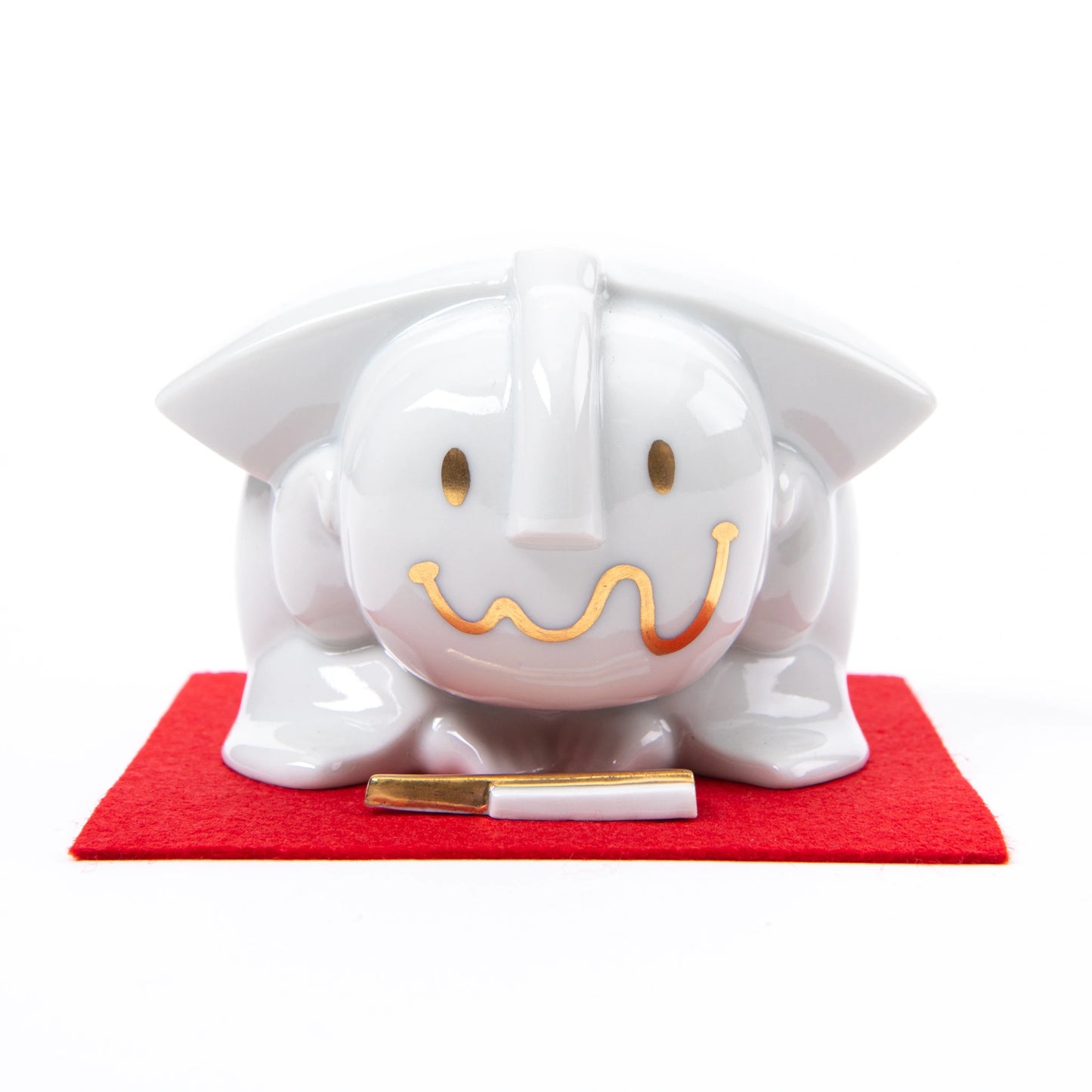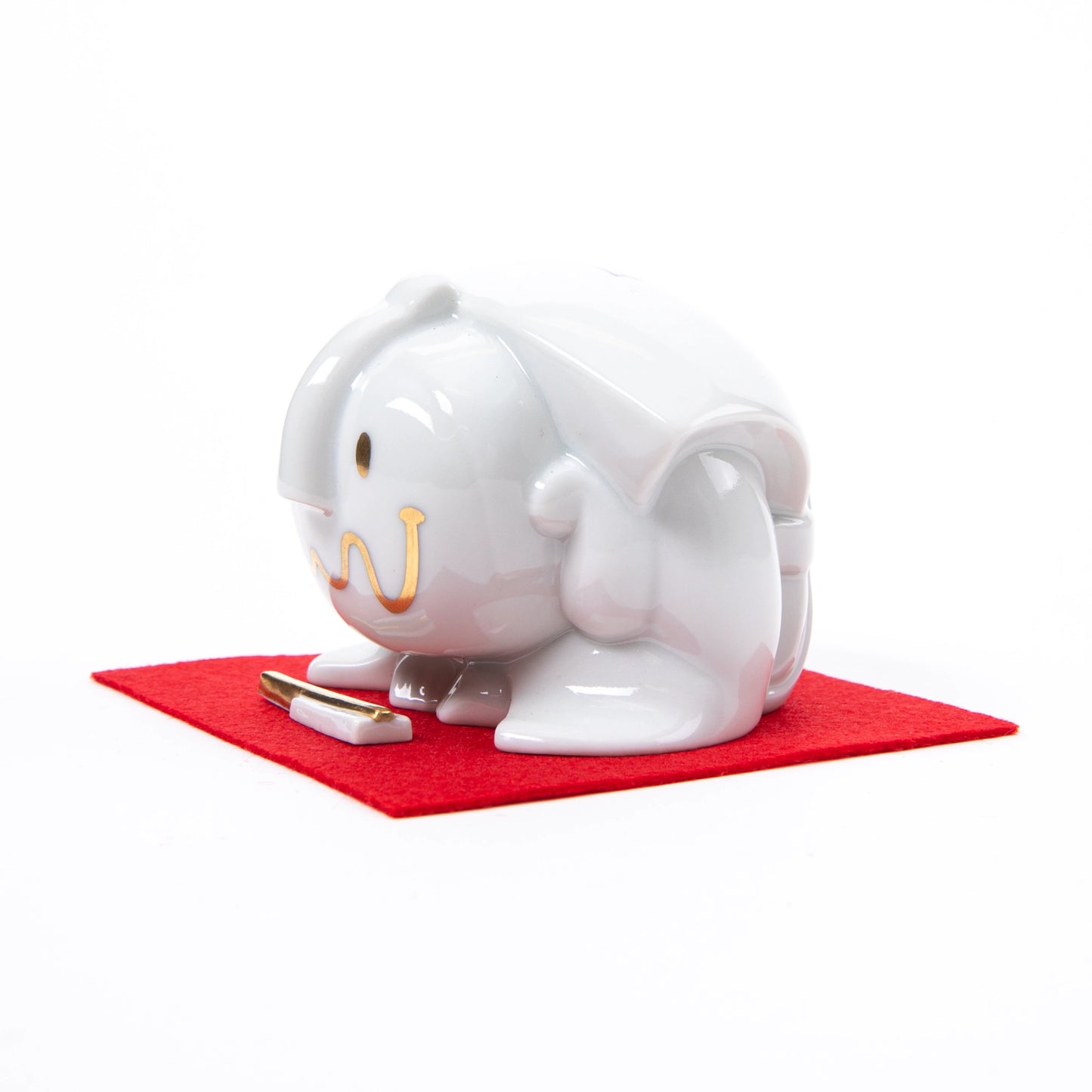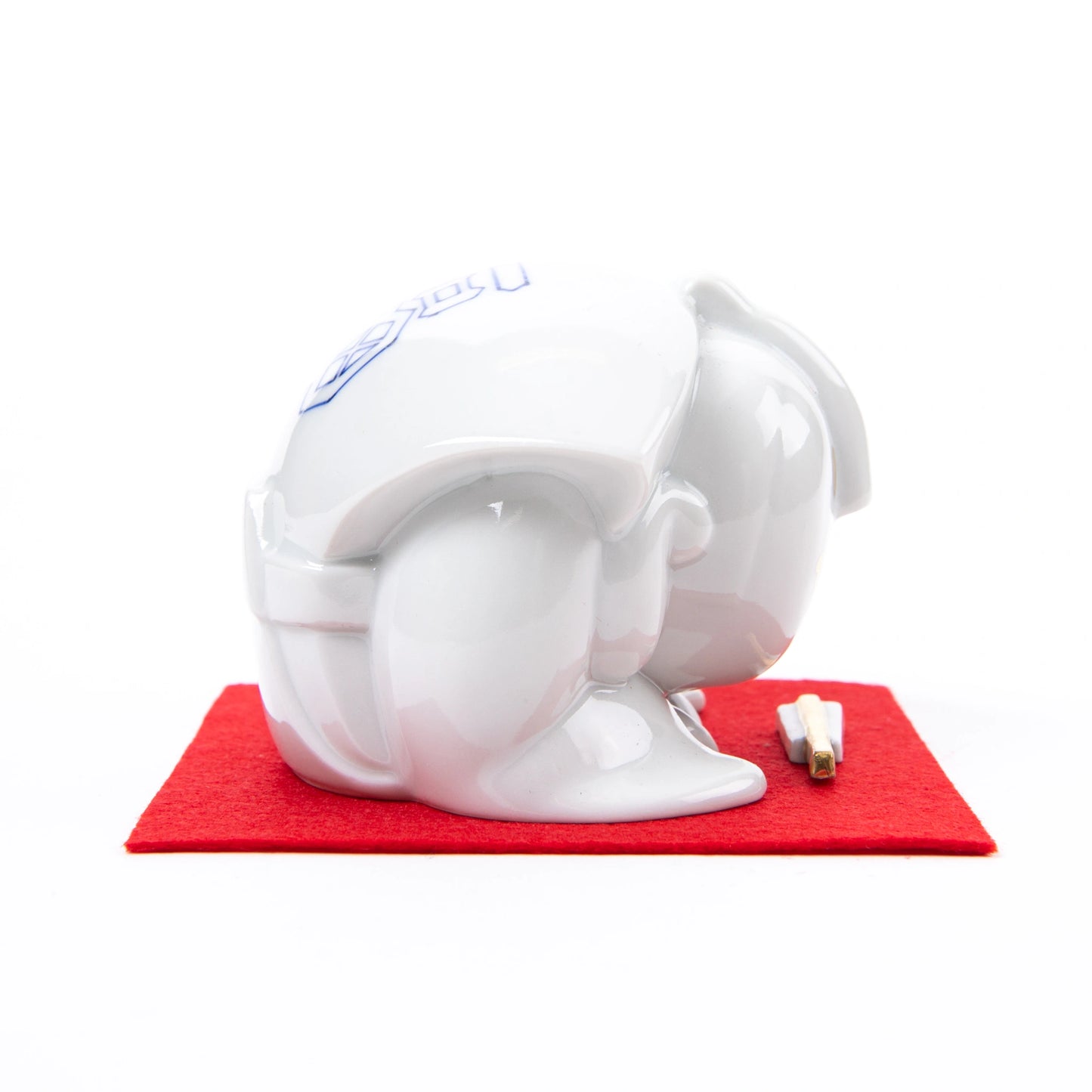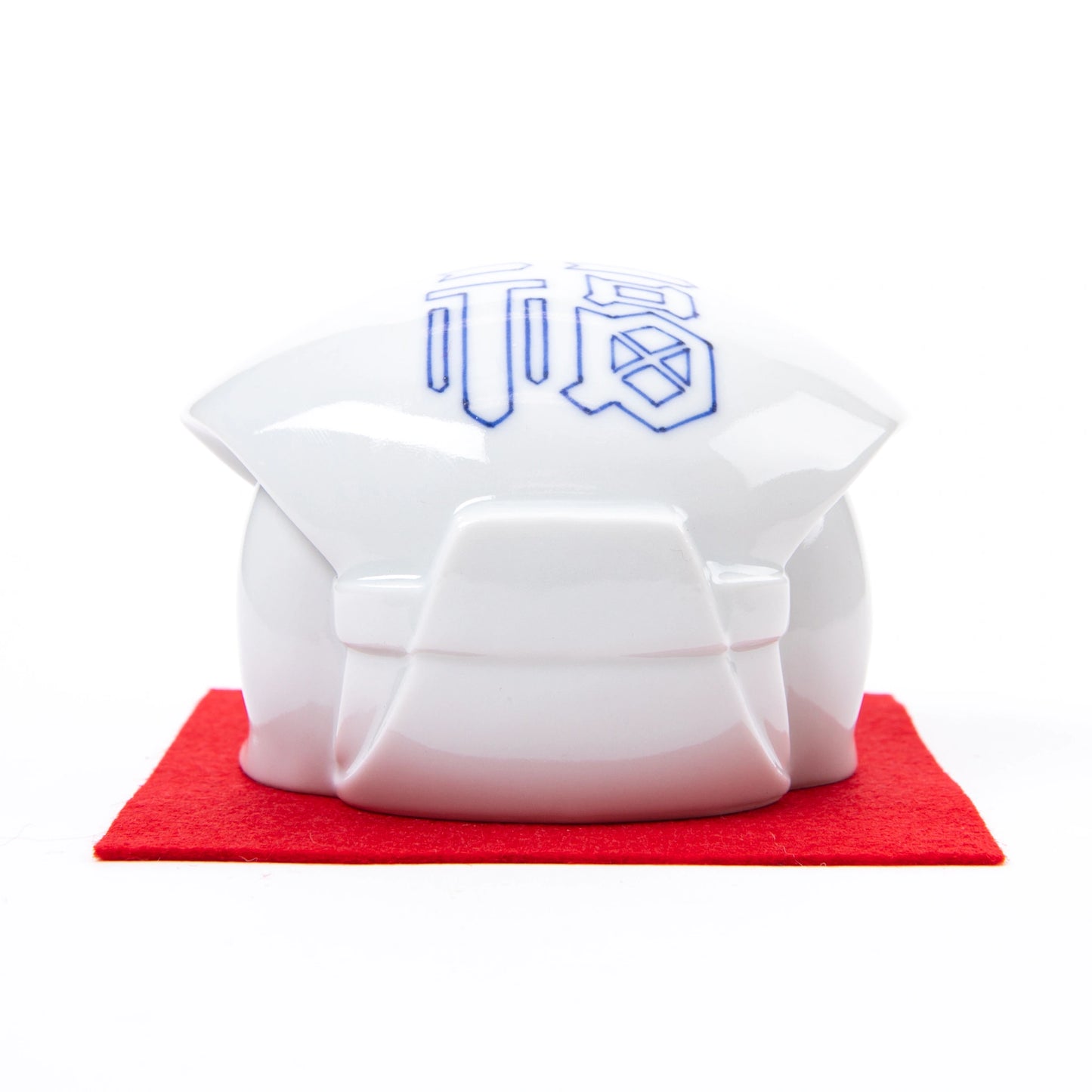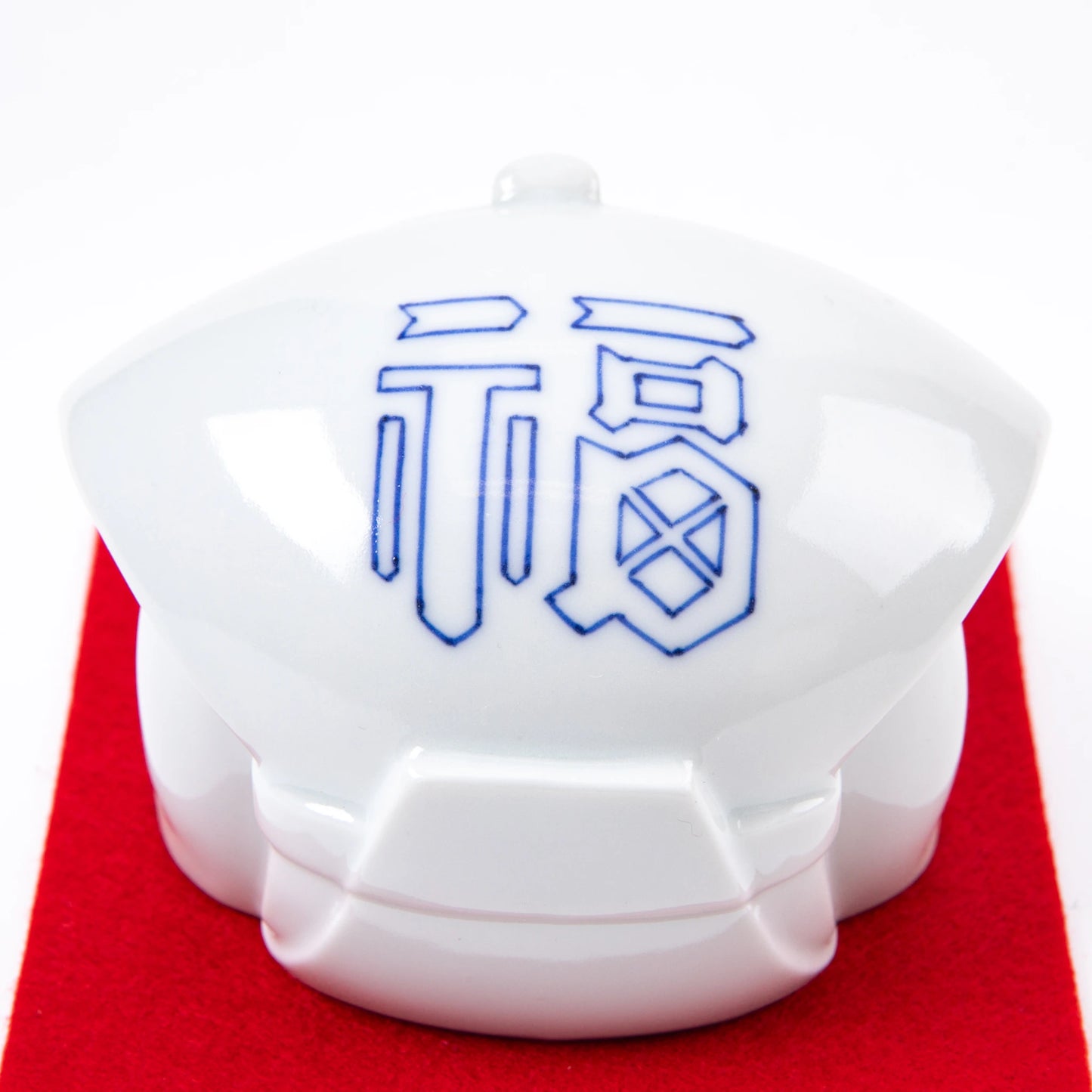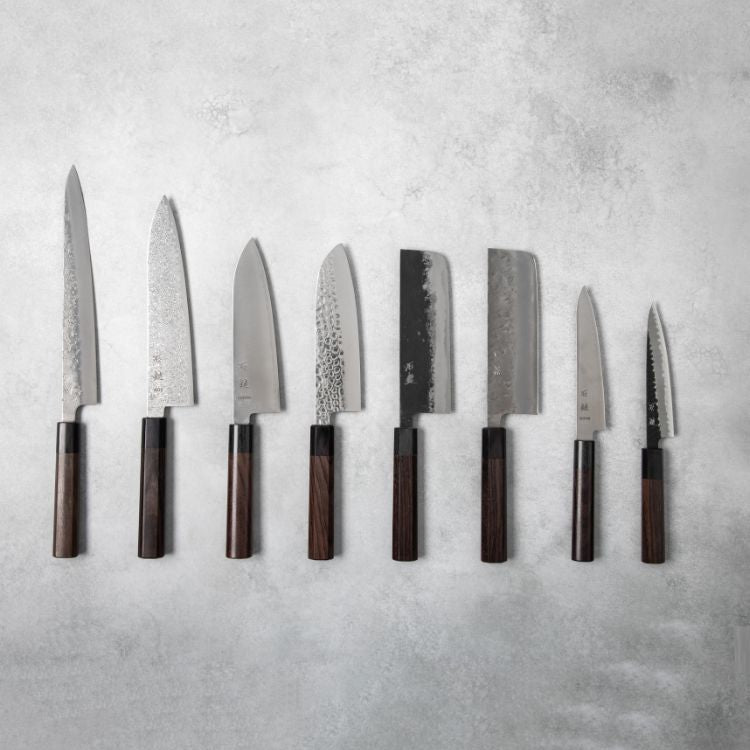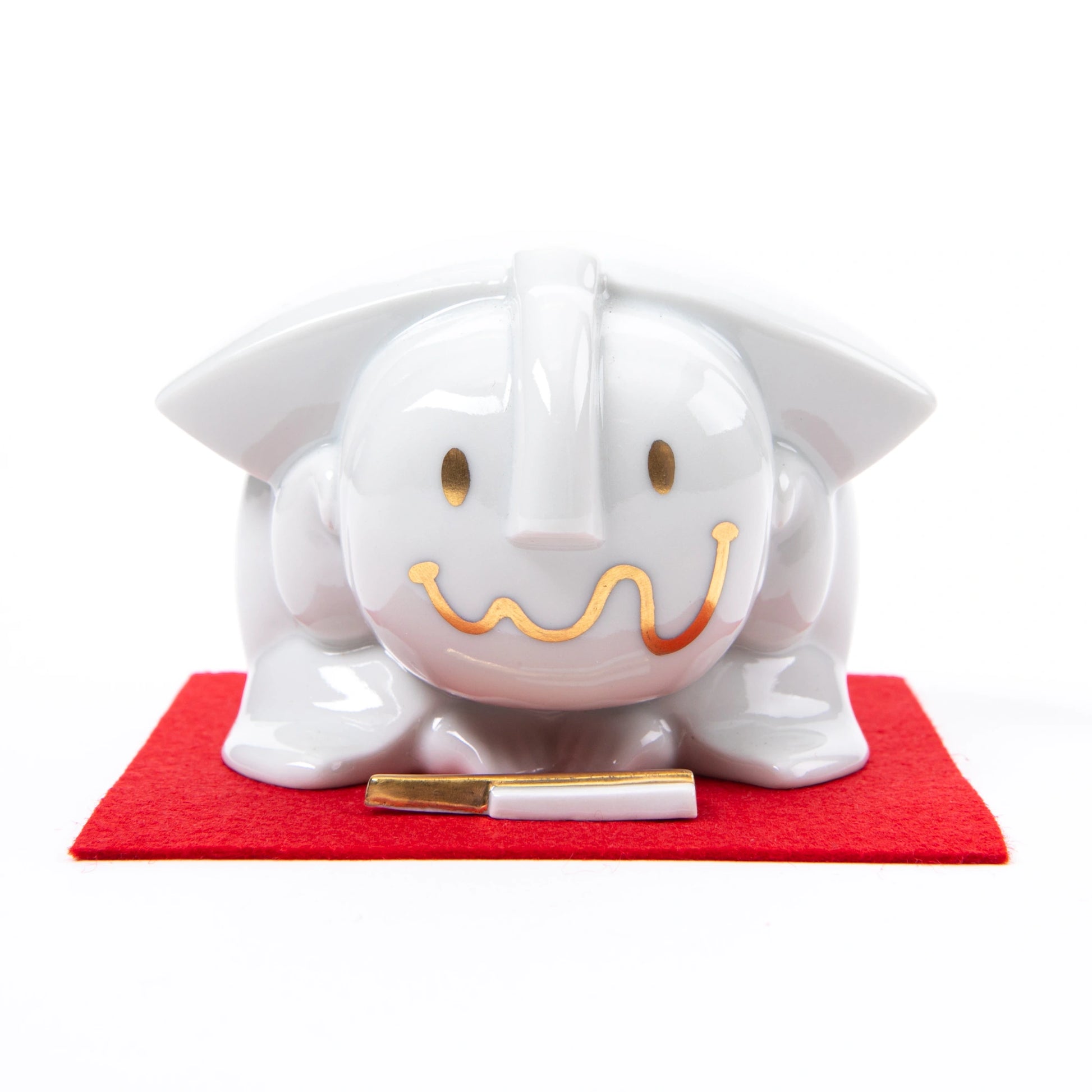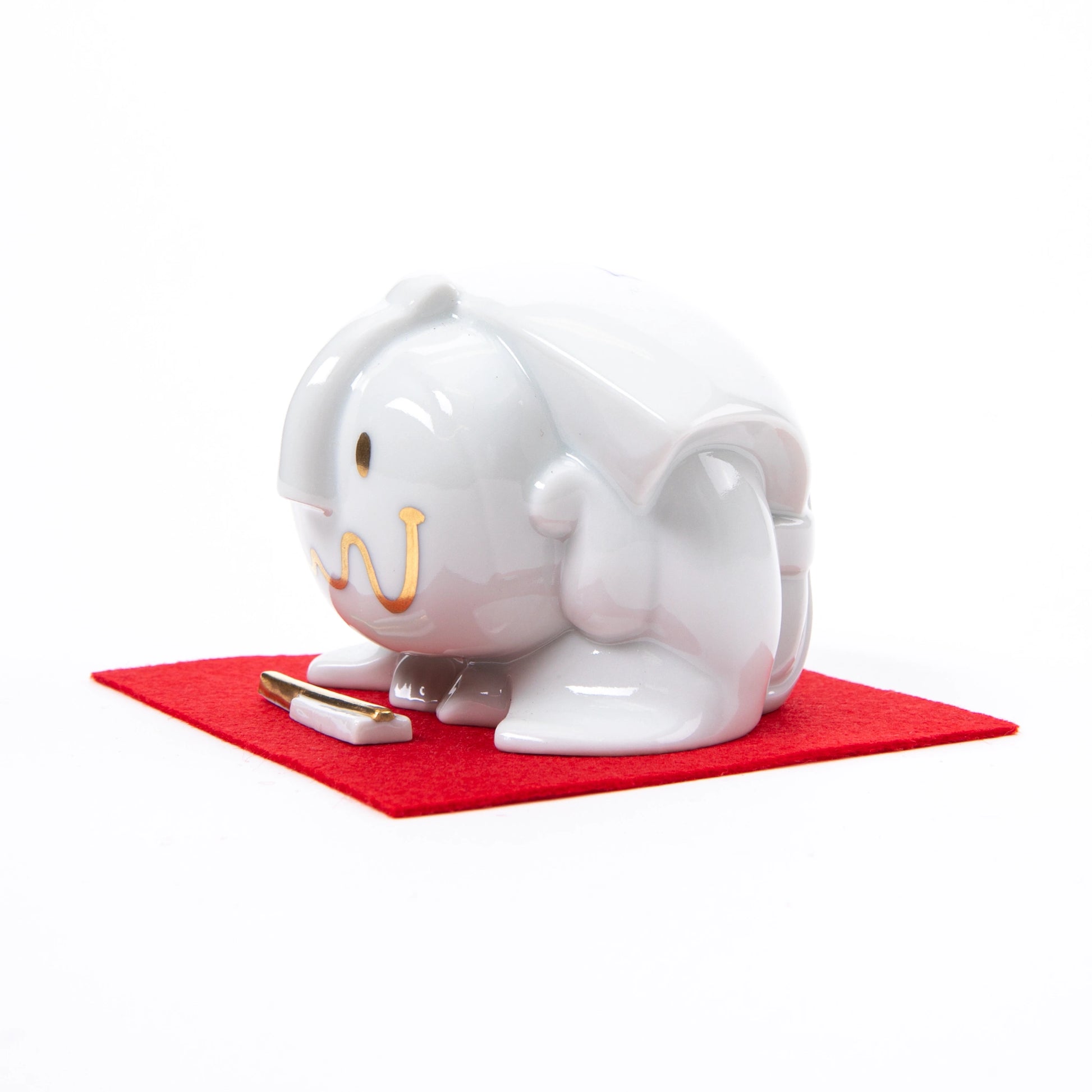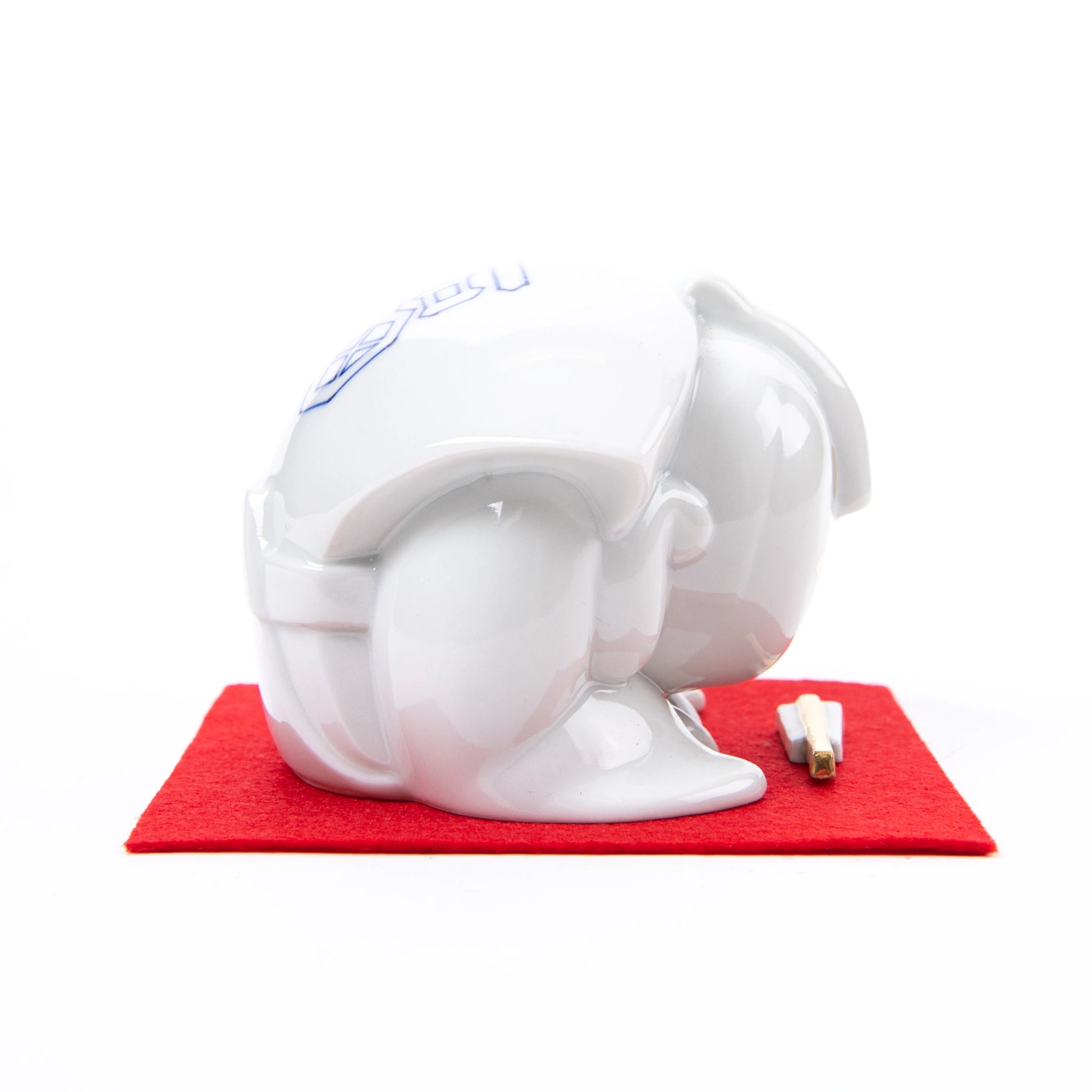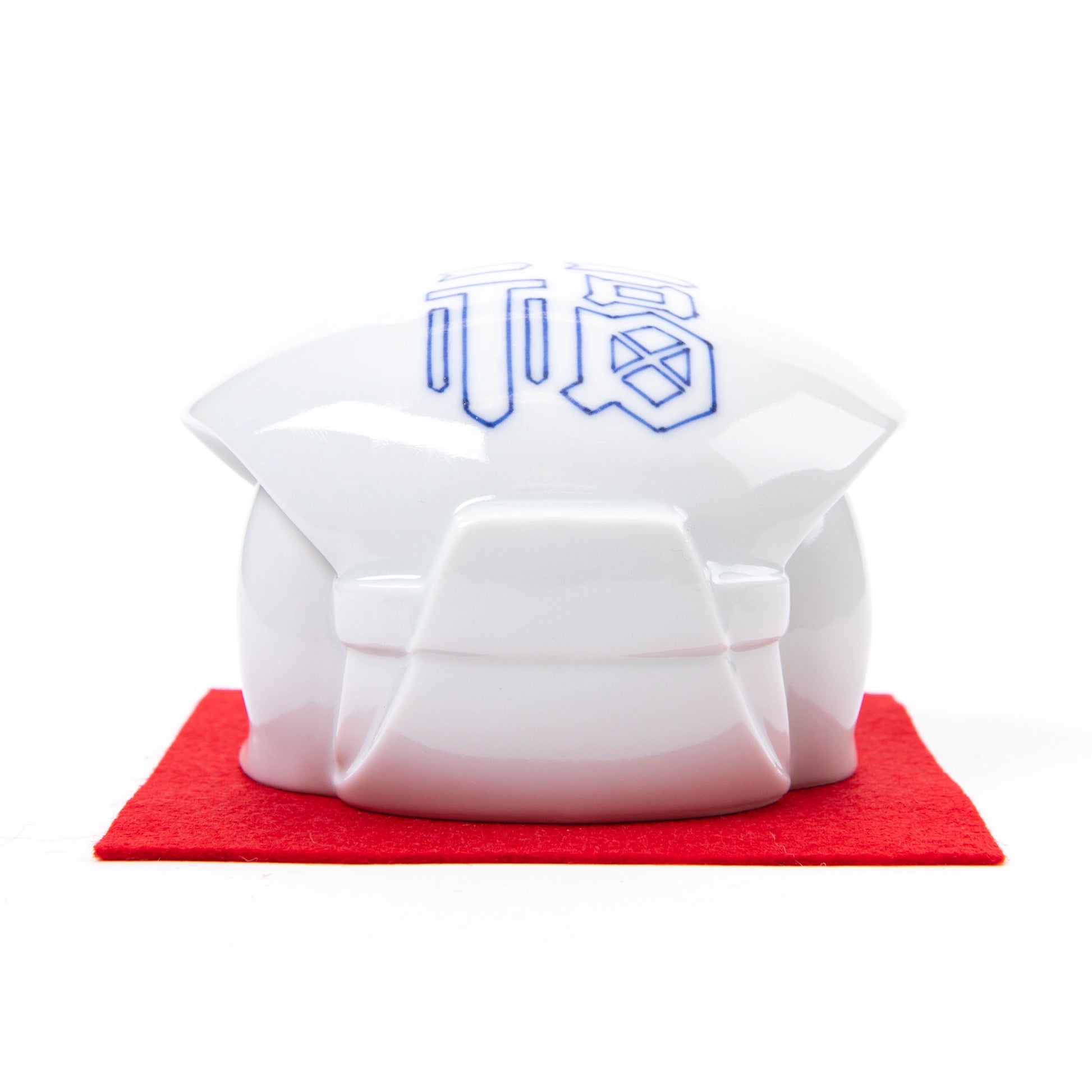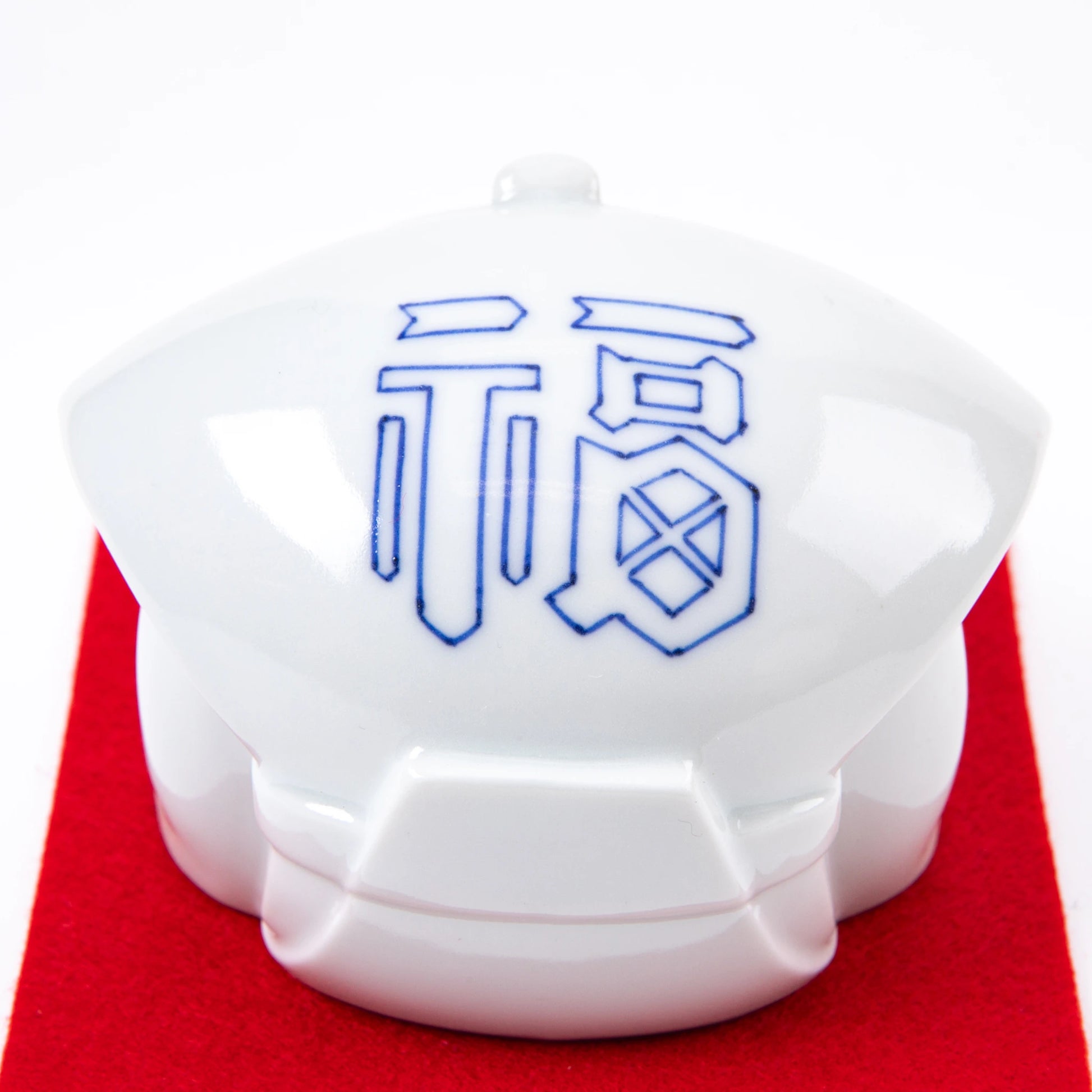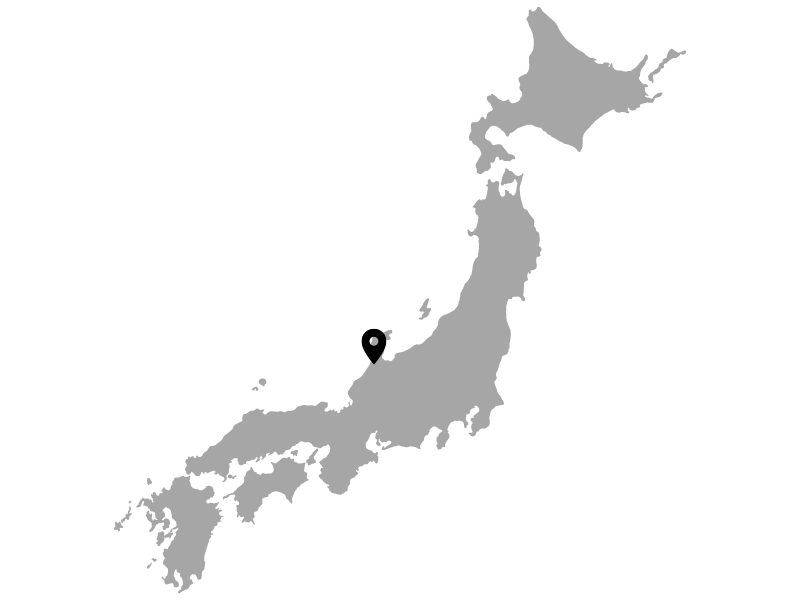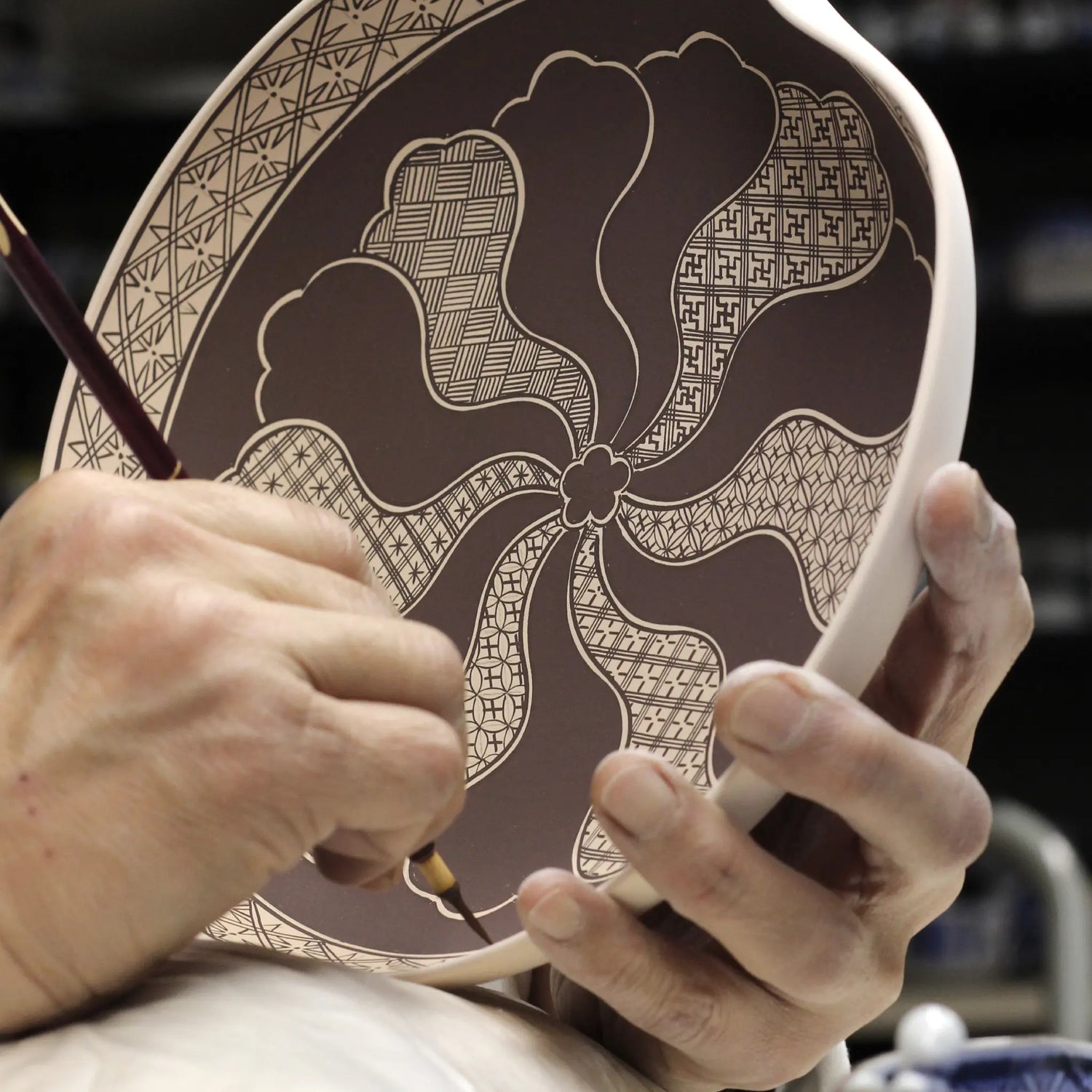Choemon Kiln Rakugaki Kano Fukusuke Sometsuke Kutani Doll
Choemon Kiln Rakugaki Kano Fukusuke Sometsuke Kutani Doll
Couldn't load pickup availability
The Choemon Kiln Rakugaki Kano Fukusuke Sometsuke Kutani Doll is a captivating fusion of tradition and contemporary artistry. Handcrafted by the skilled artisans at Choemon Kiln, this Kutani porcelain figure reinterprets the classic Fukusuke doll, a symbol of good fortune and prosperity.
This unique rendition features the traditional bowing pose, signifying respect and humility, while the refined blue-and-white sometsuke style lends an air of timeless elegance. The playful doodle-like details on the doll’s head add a whimsical, modern touch, blending humor with heritage.
Each piece is meticulously hand-painted, ensuring that no two dolls are exactly alike. The set includes a small fan accessory and a felt mat, making it a perfect collector’s item or a meaningful gift that embodies both craftsmanship and cultural charm.
Detail
Detail
Care & Use
Care & Use
- Check our tips for care & use.
